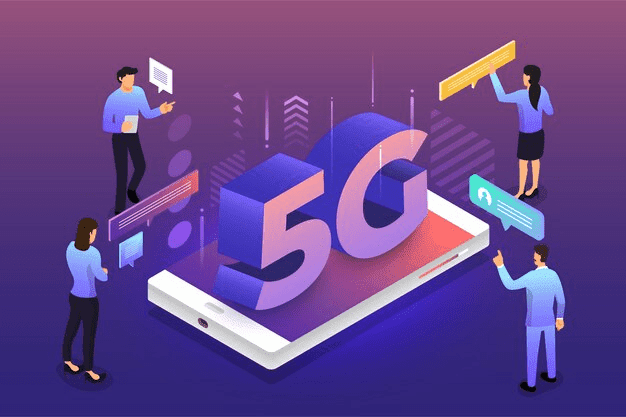The Hidden Challenges of 5G Cloud-Native Integration
5G technology is transforming industries, enabling ultra-fast connectivity, low-latency applications, and the rise of smart infrastructures. However, behind the promise of seamless communication lies a complex reality—integrating 5G with cloud-native architectures presents a series of hidden challenges. Businesses and service providers must navigate these hurdles to maximize 5G’s potential while maintaining operational efficiency and security.
Understanding Cloud-Native 5G
A cloud-native approach to 5G is essential for leveraging
the benefits of software-defined networking (SDN) and network function
virtualization (NFV). Cloud-native 5G architectures use microservices,
containers, and orchestration tools like Kubernetes to enable flexibility and
scalability. While this approach is fundamental for modern network operations,
it introduces a new layer of challenges that demand strategic solutions.
Managing Complex Infrastructure Deployment
Unlike traditional monolithic network architectures, 5G
cloud-native networks rely on distributed and multi-layered environments. This
includes on-premises data centers, edge computing nodes, and public or private
clouds. Coordinating and synchronizing these components efficiently is a
significant challenge.
Network Fragmentation – Deploying 5G across hybrid
cloud environments requires seamless communication between disparate systems.
Network fragmentation can cause interoperability issues and inefficiencies.
Scalability Bottlenecks – Scaling microservices-based
5G networks demands a robust orchestration mechanism to prevent latency spikes
and service disruptions.
Security Concerns in a Cloud-Native 5G Environment
Security is a top priority in any cloud-native environment,
and integrating it with 5G adds new complexities. With increased connectivity
and open architectures, the attack surface expands, making networks more
vulnerable to threats.
Data Privacy Risks – Sensitive information traveling
through cloud-based 5G networks requires strong encryption and compliance with
regulations like GDPR and CCPA.
Container Security – The use of containers for
network functions means each service must be secured individually, adding to
security management challenges.
Zero Trust Implementation – Traditional security
models are insufficient. A zero-trust architecture is necessary to authenticate
and monitor all network interactions.
Ensuring Low Latency and High Performance
One of the main advantages of 5G is ultra-low latency, but
cloud-native integration can introduce latency if not managed correctly. Key
factors affecting performance include:
Edge Computing Optimization – Placing computing
resources closer to the end-user reduces latency, but integrating edge
computing seamlessly into a cloud-native 5G environment requires advanced
workload management.
Real-Time Data Processing – Applications like
autonomous vehicles and telemedicine require real-time data analytics. Ensuring
minimal delay in data processing is a technical challenge that demands
high-performance infrastructure.
Orchestration and Automation Challenges
Efficient orchestration of microservices in a 5G
cloud-native setup requires sophisticated automation tools. Kubernetes and
other orchestration platforms help, but challenges persist:
Resource Allocation Complexity – Properly
distributing workloads across cloud and edge environments requires intelligent
automation to optimize performance.
Service Mesh Overhead – Managing service-to-service
communication at scale introduces additional networking complexities that can
impact efficiency.
Continuous Deployment Risks – Frequent updates and
patches are necessary for a cloud-native environment, but improper CI/CD
pipeline implementation can lead to service outages.
Integration with Legacy Systems
Many enterprises still rely on legacy systems that are not
inherently cloud-native. Integrating 5G with these existing infrastructures
presents compatibility issues.
Protocol Mismatches – Older network functions may not
support modern cloud-native frameworks, leading to operational inefficiencies.
Gradual Migration Strategies – Businesses need hybrid
models that allow for gradual adoption of cloud-native principles without
disrupting existing operations.
Regulatory and Compliance Challenges
5G networks operate under strict regulatory frameworks, and
compliance varies across regions. When adopting a cloud-native 5G approach,
businesses must consider:
Data Localization Laws – Some regions require data to
be stored and processed locally, complicating cloud-based deployments.
Industry-Specific Regulations – Telecom, healthcare,
and finance industries have unique compliance requirements that add layers of
complexity to 5G cloud integration.
Overcoming These Challenges
To successfully integrate 5G with cloud-native
architectures, organizations must adopt a strategic approach that includes:
Robust Security Frameworks – Implementing end-to-end
encryption, zero-trust security models, and AI-driven threat detection.
Advanced Orchestration – Leveraging AI-powered
automation for efficient microservices and workload management.
Hybrid and Multi-Cloud Strategies – Balancing edge
computing, private, and public cloud resources for optimized performance.
Compliance-Centric Deployment – Ensuring adherence to
regulatory frameworks through proper data governance and legal consultations.
If you’re looking for more insights on optimizing 5G
cloud-native integration, click here to
find out more.
Conclusion
While the promise of 5G is undeniable, the hidden challenges
of cloud-native integration must be addressed to unlock its full potential.
Businesses that proactively tackle security, orchestration, performance, and regulatory
issues will be better positioned to leverage 5G’s transformative capabilities.
Navigating these challenges requires expertise, advanced technologies, and a
forward-thinking approach.
For expert guidance on overcoming these integration hurdles,
check over here for industry-leading solutions and strategies.



Comments
Post a Comment